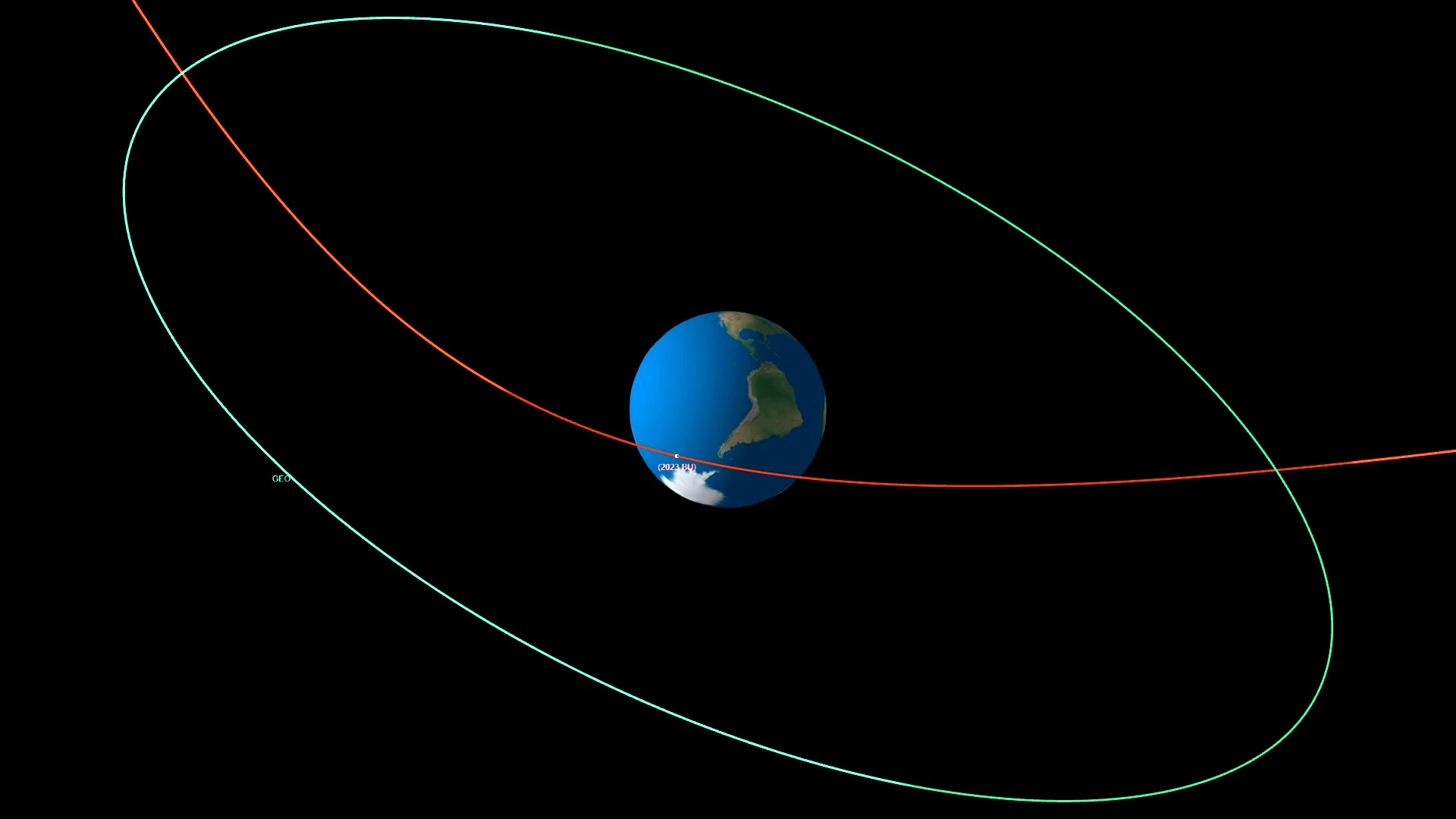
A small asteroid gave Earth a close but safe shave Thursday night
NASA says this was one of the closest flybys of a near-Earth asteroid they've ever recorded.
A small asteroid swung past Earth Thursday night, in one of the closest flybys we've ever seen.
On January 21, 2023, Gennadiy Borisov, the same amateur astronomer who found the first interstellar comet, spotted a new asteroid flying towards our planet. Now named 2023 BU, this roughly 5-metre-wide space rock is one of 115 asteroids discovered so far this year that come reasonably close to our world. This particular near-Earth asteroid has earned a special distinction, though.
Based on the observations made by Borisov and other astronomers around the world, NASA's system for analyzing the impact threat of asteroids — Scout — found that it would be a safe pass, but an extremely close one!
"Scout quickly ruled out 2023 BU as an impactor, but despite the very few observations, it was nonetheless able to predict that the asteroid would make an extraordinarily close approach with Earth," Davide Farnocchia, the NASA JPL engineer who developed Scout, said in a press release. "In fact, this is one of the closest approaches by a known near-Earth object ever recorded."

These diagrams show the orbit of asteroid 2023 BU in relation to the Earth, the ring of geostationary satellites (green), and the orbit of the Moon (gray) — the top view from beyond the Moon's orbit, and the bottom from beyond geostationary orbit. Credit: NASA/JPL-Caltech/Scott Sutherland
At 7:27 p.m. EST on Thursday, January 26, 2023 BU passed over the southern tip of South America at an altitude of around 3,600 kilometres above the surface.
For a sense of scale, that's around 9 times farther away than the orbit of the International Space Station. However, it's also about one-tenth the distance to the ring of geostationary weather and communication satellites that circle the planet, and over 100 times closer than the Moon.
According to NASA, Earth's gravity affects every asteroid that comes close to the planet. 2023 BU is coming so close, though, that it will experience a significant change in its orbit around the Sun.
"Before encountering Earth, the asteroid's orbit around the Sun was roughly circular, approximating Earth's orbit, taking 359 days to complete its orbit about the Sun," the space agency said. "After its encounter, the asteroid's orbit will be more elongated, moving it out to about halfway between Earth's and Mars' orbits at its farthest point from the Sun. The asteroid will then complete one orbit every 425 days."
No risk from 2023 BU
Both NASA and the European Space Agency have gone on record saying that there was no threat of an impact from asteroid 2023 BU.
In fact, the discovery of this asteroid shows how far we've come in the field of planetary defence.
"2023 BU was discovered about a week ago. Although it doesn't seem like much warning, the advance detection of this very small — and safe — asteroid, shows just how much detection technologies are improving," the ESA said.
Spotted!!
As predicted, 2023 BU skimmed by Earth, right on schedule!
The predictions of its trajectory were so accurate that a robotic camera run by the Virtual Telescope Project picked up the tiny visitor during its closest pass.
This stands as another fantastic example of how far we've come with our ability to detect and track asteroids.
In November, astronomers spotted an even smaller object, a meteoroid less than a metre wide named 2022 WJ1, just three hours before it plunged into the atmosphere to burn up over Southwestern Ontario. The hunt for meteorites from this event is still ongoing.
